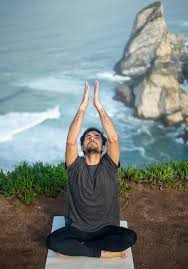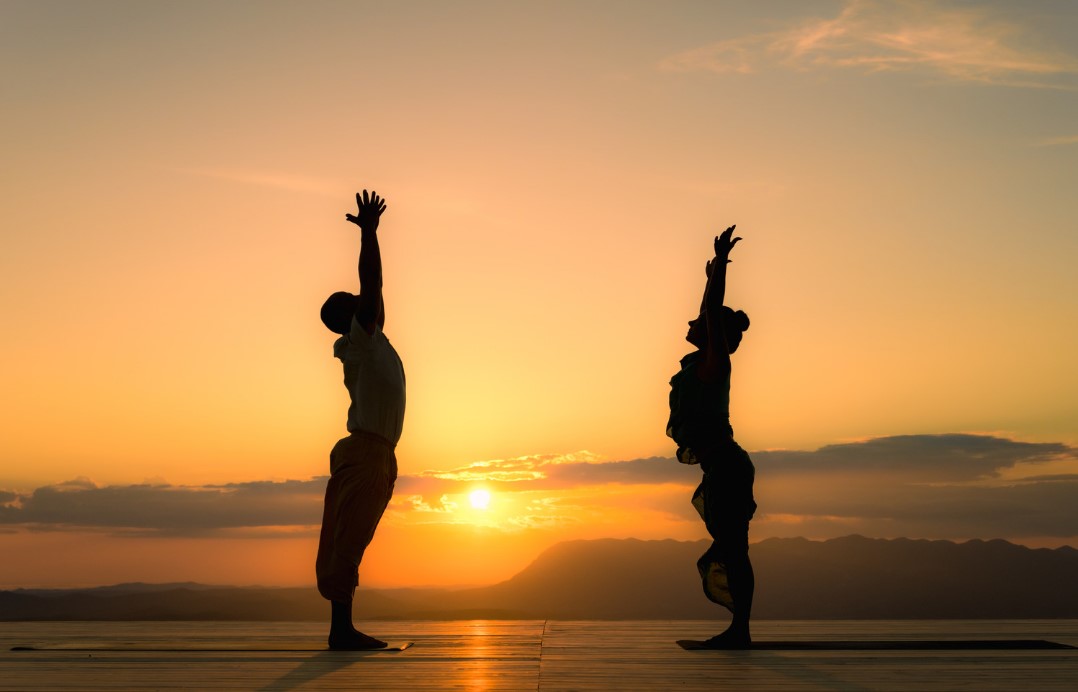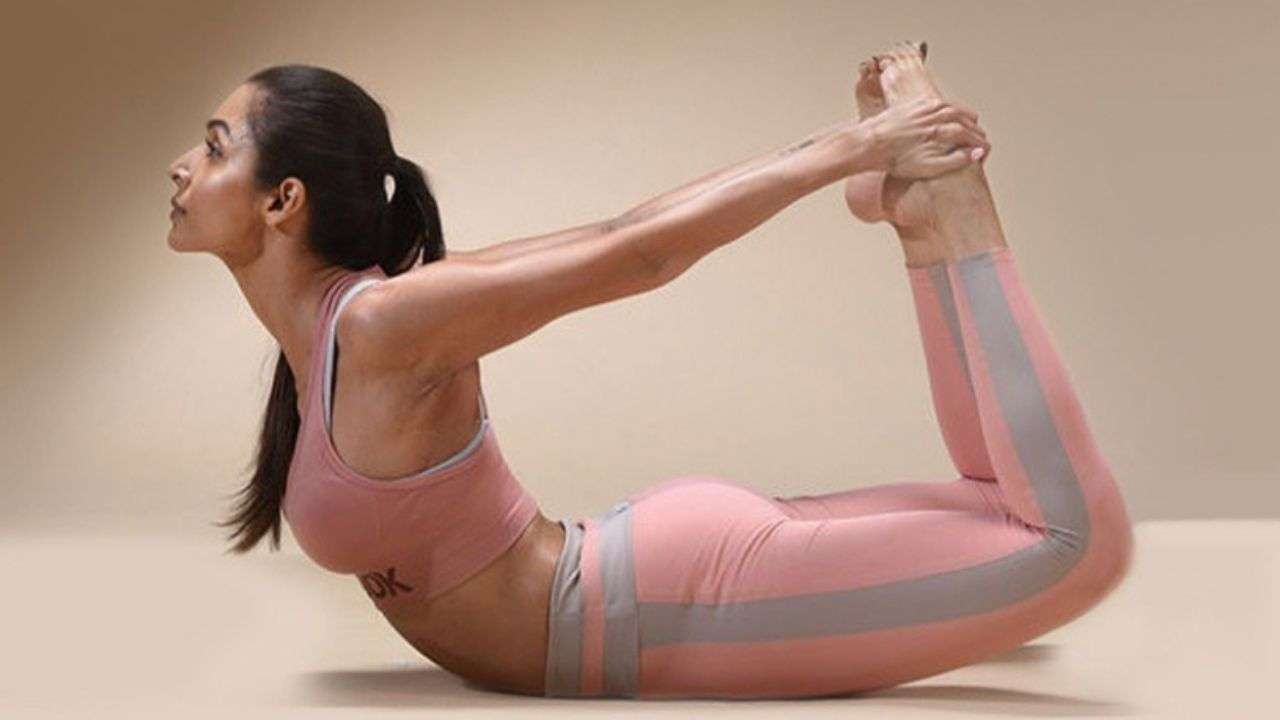What Is The Difference Between Dharana and Dhyana ?
If you have been practicing yoga for some time, you may be familiar with Patanjali’s Yoga Sutras. The Yoga Sutras, is a practical textbook, which has been written by the sage Patanjali. However, a few scholars believe, that his disciples may have compiled all his teachings, after his death. The truth is not known, till date. However, if you are serious about your spiritual journey, you must ensure to read Patanjali’s Yoga Sutras.
To make matters easy from here on, you must understand that yoga is an amalgamation of the mind, body, and soul. Most people identify the physical body and the soul, as separate entities. If you start reading the Yoga Sutras, you will understand that yoga is a spiritual journey, which will take you towards the final union of the self and universe. While pursuing yoga in rishikesh, you will be able to understand these aspects more clearly.

The Yoga Sutras Decoded
Before we move on to Dharana and Dhyana, it is important for you to know, what the sutras are. When you have accomplished one, then only you can move on to the next. In this case, Dharana and Dhyana come sixth and seventh in the sutras. The Yoga Sutras have 196 sutras. You will find the book divided into four chapters. The chapters discusses aspects like aims and practice of yoga, development of yoga powers, and finally surrender. Moreover, you will also get a clear idea of the pitfalls in this journey. According to Sage Patanjali, yoga is the diving of the mind into silence. When your mind will settle down, you can link with the universal consciousness. We, as humans have our thinking always overshadowed by the activities of the mind, which are on most of the time.
This means, you have to use yoga as a channel, to look within. Your self can only be discovered, when you are silent, and so are your thoughts. If there is noise, doubts of various kinds, and confusion, you can never attain a complete understanding of yourself. Moreover, you will also never be able to identify your true powers. You will be able to discover the real you, in the best yoga school in rishikesh. In our day to day lives, most of us are under constant stress and nervous tension. It can lead to self-doubts as well. You will often get attached to sensory objectives, rather than spiritual ones. If you are committed to your yogic practices, you can overcome all these. If you cultivate a giving nature, to all who need your help, in terms of gratitude, appreciation, or donation, then you will have a feeling of accomplishment,
The main causes that man suffers from are, not knowing the real self, living with ego, sticking to pleasure, and fearing death. Now, you can resolve all these through meditation and surrender.
The 8 Limbs Of Yoga
If you want to set your practices in accordance with the principles laid down by sage Patanjali, then in that case, you will propel yourself forward in your spiritual journey. The eight sutras are-
- Yama
- Niyamas
- Asana
- Pranayama
- Pratyahara
- Dharana
- Dhyana
- Samadhi
You can learn about all these, in the 200 hour yoga teacher training in rishikesh. It is one of the best yoga courses that Hrishikesh Yoga School offers.
You will learn about the nuances of all the above commandments, in complete detail.
Yama means behaving well with the others or yourself, in general. Non-violence, non-stealing nature, truthfulness, abstinence from greed, are a few of the practices that one ought to do in terms of daily life.
Niyamas point towards the principles of your life. They include purity of thoughts, contentment, studious nature and devotion.
Asana are looked at, by others as acts of physical nature. But the true and exact meaning of asana is taking seat. You can do a number of asanas in seated form. But that is not all. The seated postures mainly prepare the body for the mental and spiritual upliftment that lies ahead in the future.
Next comes Pranayama, which is manipulation of breath or expansion of breath. Even if you are not doing asanas, and just breathing, you are performing yoga. Breathing is the basic need of life, and one of the practices that if done correctly, can impact the individual in myriad positive ways. Done wrong, it will have the opposite reaction.
Pratyahara, helps the individual to turn inwards and withdraw from the senses. You can explore the inner universe, with full force thereafter.
Dharana is the state, which you can attain after you have mastered the previous five stages. It is the act of training the mind to enter a meditative mode.
Dhyana is the state, when you are in mid meditation.
Samadhi leads to the final union with the cosmic forces of the universe. The first four sutras prepare the body for the next four. The last one is actually the doorway to the divine.
Now, we will discuss Dharana and Dhyana in detail.
Dharana – 6th Limb Of Yoga
Dharana is that intense phase of concentration, which helps one to prepare for meditation, or Dhyana. Patanjali has mentioned about it in Sutra 3.1. It mainly states the binding of the mind, to focus on a single point. You can use the breath, as the point of focus, but many yogis also use body sensations, mantras, and images for the same. From the Dharana, starts the first innermost practice. You can also call it a prelude to the next two. It mainly helps you to move beyond the earthly body. The kundalini yoga is one of the pathways, which you can follow. It is the state of awareness, which helps one to develop intention for your practice and also prepares the body. You can practice the same, until you develop the mind-set to do Dhyana.
This is basically the training period, which will help you to concentrate. First, you have to find out the focus object, which can be your breath or almost anything. Then, you have to start paying attention to it. Thereafter, you will start feeling good. As soon as your mind wanders, you realize your folly, and become keen on bringing back the attention to the breath. You have to hone your concentration skills and prepare for the seventh state in the meditative journey.
Here are the steps to practice Dharana:
- You have to first learn Pratyahara. It is the fifth limb of yoga, which provides one with the skills to withdraw from any sort of external sensation. It can help you to succeed in developing Dhyana.
- Firstly, you ought to find a comfortable place to sit. Avoid distractions and strong light. You can sit in Sukhasana, as putting too much strain in Padmasana, can stress out the legs.
- Close your eyes and select an object to focus on. You can either choose an internal focus or an external one.
- Narrow down your focus slowly, and concentrate on any mantra, if possible. It can be just about any mantra.
- You should practice regular Dharana, to work your way to your final destination.
Decoding Dhyana – The Seventh Limb of Yoga
Dhyana means meditation and contemplation. It means ‘the moving mind’. The Bhagavad Gita also lists Dhyana as one of the four yoga disciplines. The others being Bhakti Yoga, Jnana Yoga and Karma Yoga. In Gita, Sri Krishna states that Dhyana is the Yoga of Meditation.
You can practice Dhyana in four easy steps, after you have mastered the sixth limb, which is Dharana.
- You can start with the same, as usual. You may start concentrating and focussing on either a mantra, an object, or an external object, such as the candle.
- Slowly, start to eliminate the feelings. You should stop thinking about the external or outside world. Focus your consciousness on the meditating object.
- Add a mudra, if you can handle it. It can help you to focus your attention.
- Thereafter, you have to silence your thoughts, so that you are clean from within.
So, this is the ultimate meditative state, when things from the external world, stop affecting you. Dhyana is more or less similar to Dharana, but you can also call it the middle stage. In this stage, you are so much absorbed in meditation that it becomes a part of your consciousness. It is no longer separate from your entity. You can get guidance on the same from the Rishikesh Yoga School. The teachers at such centers like Hrishikesh Yoga School have been practicing Dharana and Dhyana for a long time. So, you will be able to absorb their learning and setbacks, as well.
There are numerous benefits of practicing this stage. You will find yourself, becoming a lot calmer and less stressed. Additionally, your life will become easy. You will stop pondering over mundane things any longer. The reactions that your mind generates will also be subtle, and you will be able to maintain stoic silence.
Difference Between Dharana and Dhyana Decoded
Thus, you are now fully aware, that Dharana and Dhyana are the two stages of meditation that have been described in Patanjali’s Yoga Sutras. Some of you may feel a bit confused on the meanings of the two, but they are here for you to learn and differentiate.
- Dharana is not as diverse and expansive as Dhyana. The sixth limb is called Dharana, which requires focused attention on one specific internal or external focal point, whereas Dhyana, is the seventh limb, which requires a broader meditative stance.
- Dhyana involves your full immersion in the meditative state. Dharana may involve moments of concentration with gaps in between, but Dhyana is a continuous flow or state of mind. Dhyana is a state of meditation that taps into your self-awareness or soul. It is a part of consciousness.
- Dharana and Dhyana lead to the final state of Samyama. When you carry out the Dharana, Dhyana, and Samadhi one after the other—you experience Samyama, which is a state of bliss where nothing can affect you. You are in oneness with the universe as a whole.
Samadhi is a state which is beyond the normal mind and intellectual state. If you have a goal, which includes taking Samadhi, then you have to be very regular with your spiritual practices. Each day brings in new powers, which can ultimately lead to the final union.





